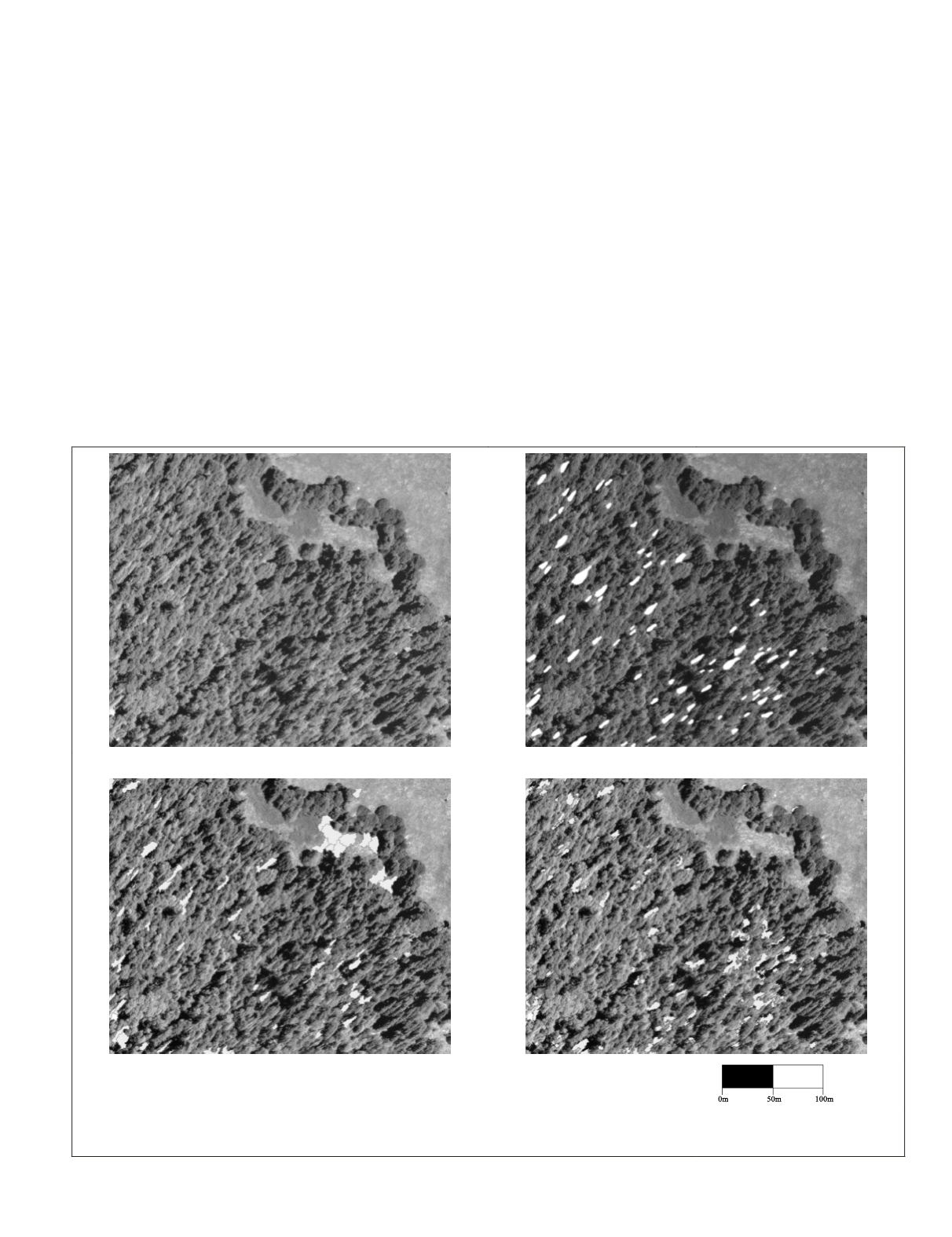
the spatial contextual approach generally outperformed the
object-based approach in terms of dead tree class accuracy,
but yielded the same amount of commission error.
Several qualitative differences between the two image
classification approaches are readily evident. A much steeper
learning curve is associated with the object-based program;
the spatial contextual routine is much easier and quicker to
learn and implement. The spatial contextual products have
objects of greater shape and size quality, with dead trees
represented as discrete individual round objects, while with
object-based products dead tree “objects” tend to occur as
larger contiguous ‘blobby areas’ of dead trees (as illustrated
in Figure 3). Both programs demonstrated consistent per-
formances across data types, but also varied in performance
depending on scene differences
.
Discussion
Image Transform and Classification Approaches
The object-based image classification approach of adding
transformation inputs to the classification process, either
singly or in combination with the spectral bands, yielded a
slightly higher classification accuracy over spectral bands
alone (with up to a 5 percent average increase in accuracy,
and a 13 percent reduction in commission errors). This find-
ing is in contrast to an abundance of studies demonstrating
more significantly the effectiveness of adding transforma-
tion inputs to improve the object-based routine (Im
et al
.,
2008; Lippitt
et al
., 2012; Stow et al., 2008; Yu
et al
., 2006).
The inputs alone (without spectral bands) demonstrated no
improvement at all. In particular it was noted that without
the spectral bands, the segmentation routine did not perform
as effectively. Thus the incorporation of transformed inputs
yielded marginal improvements in this study and requires ex-
tra work and computing power/time to process classifications
with added inputs, particularly the combination with all of
the inputs together. For example, the larger Laguna scene had
to be processed in tiles for the 2005 imagery due to its greater
data volume, particularly with added transform inputs.
For the spatial contextual analysis the enhancement ap-
proach of adding transformation inputs to the classification pro-
cess increased classification accuracy over spectral bands alone,
for several inputs, up to a 13 percent average improvement with
an 8 percent reduction in commission error. The transforms
plus the spectral bands yielded the highest accuracies although
(a) Image alone
(b) Manually digitized dead tree crowns
(c) eCongition
(d) Feature Analyst
Figure 3. Comparison of (a) image alone, (b) image with manually digitized dead tree crowns, (c) eCognition object-based classification
product, and (d) Feature Analyst spatial contextual machine learning classification product. Dead trees are portrayed in white on a black
and white copy of a true color aerial orthoimage for a portion of the Palomar Mountain study site.
PHOTOGRAMMETRIC ENGINEERING & REMOTE SENSING
July 2016
577


